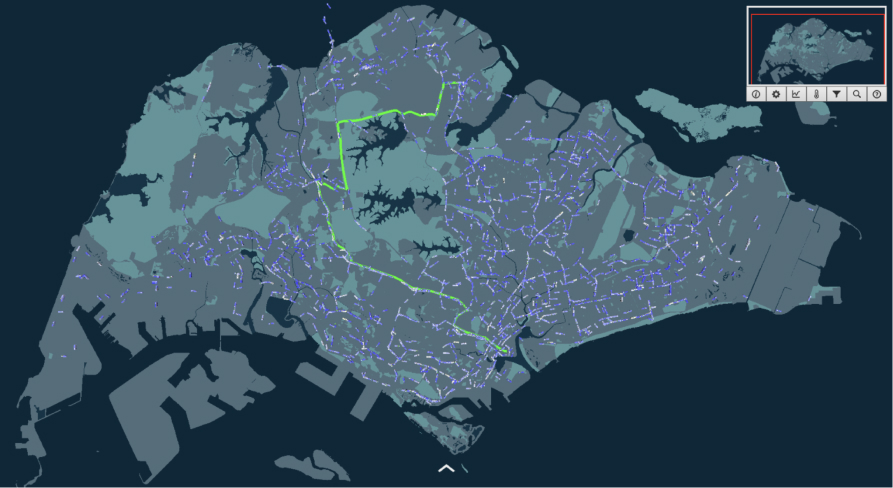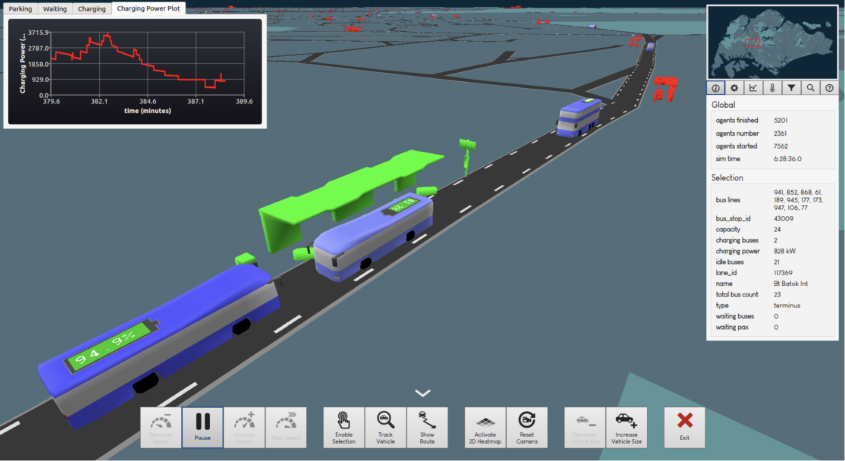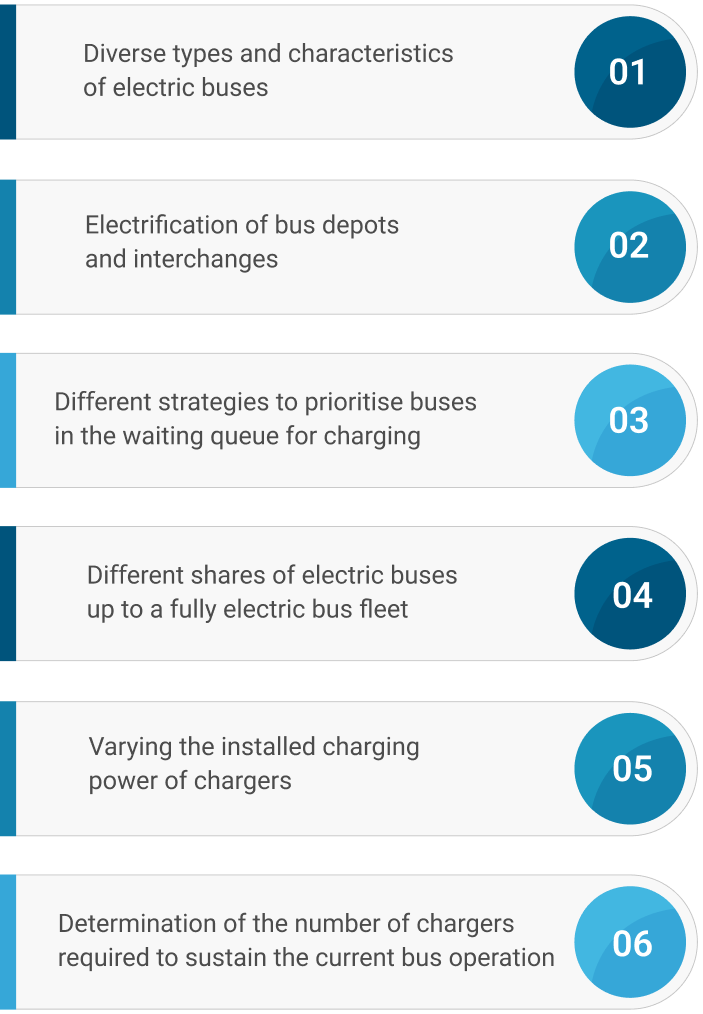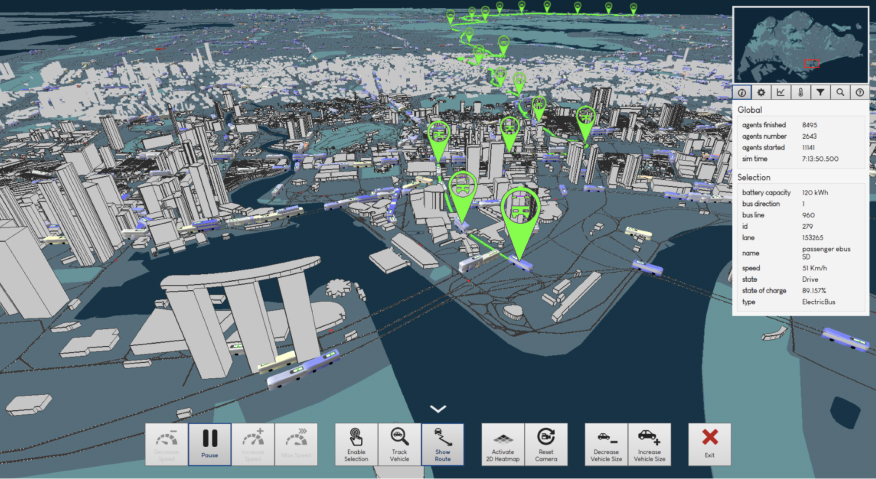
With climate change concerns in mind, many transportation authorities in the world are pushing towards the electrification of road transport in the coming decades. In particular, public transport networks are considered for early electrification. Converting an existing public bus system to operate with electric buses can be challenging, as existing bus schedules might not be directly feasible with the limited range of electric buses. Moreover, the charging infrastructure for an electric bus fleet involves the sharing of chargers between many buses, thus necessitating finding the appropriate charging strategy and the corresponding number of chargers to install.

With CityMoS, entire public bus networks can be simulated with the desired fleet composition and charging infrastructure for depot-charging and/or opportunity-charging at end-stations. Optimization of the number of chargers through simulation-driven optimization ensures the feasibility of the operation at each stage of the optimization. Trip dispatching verifies that sufficient energy is available to the vehicles, otherwise they are directed to a charging station to replenish their battery. The energy demand of both service trips and off-service trips is accounted for and depends on the driving profile, air-conditioning load and the number of passengers in the bus.





In the SITEM project, we applied this model and built a digital twin of the entire bus network of Singapore, which consists of more than 500 bus routes and 5800 buses. In cooperation with the local transport authority, several electrification scenarios have been evaluated and compared. The impact on the power grid of the electrification of the bus fleet was assessed and recommendations were derived.